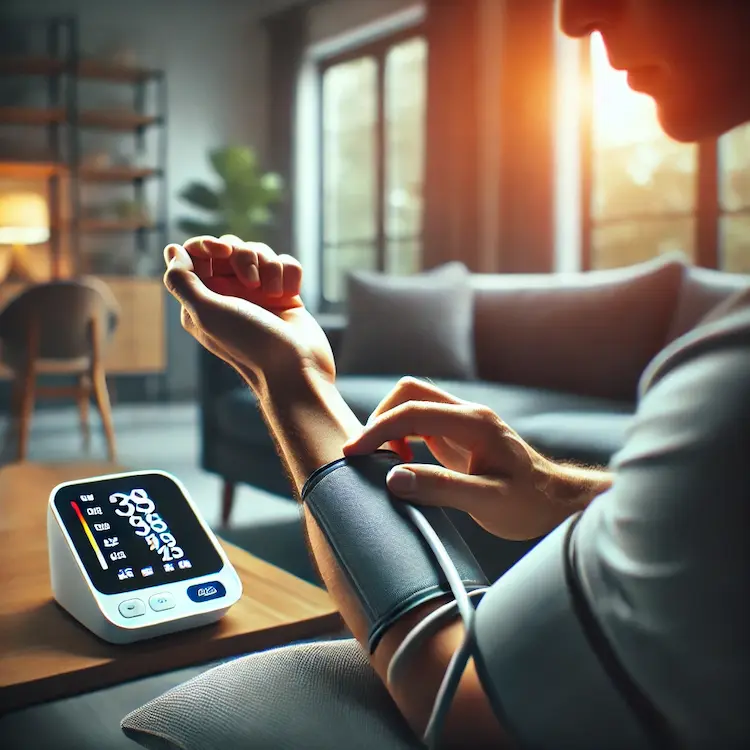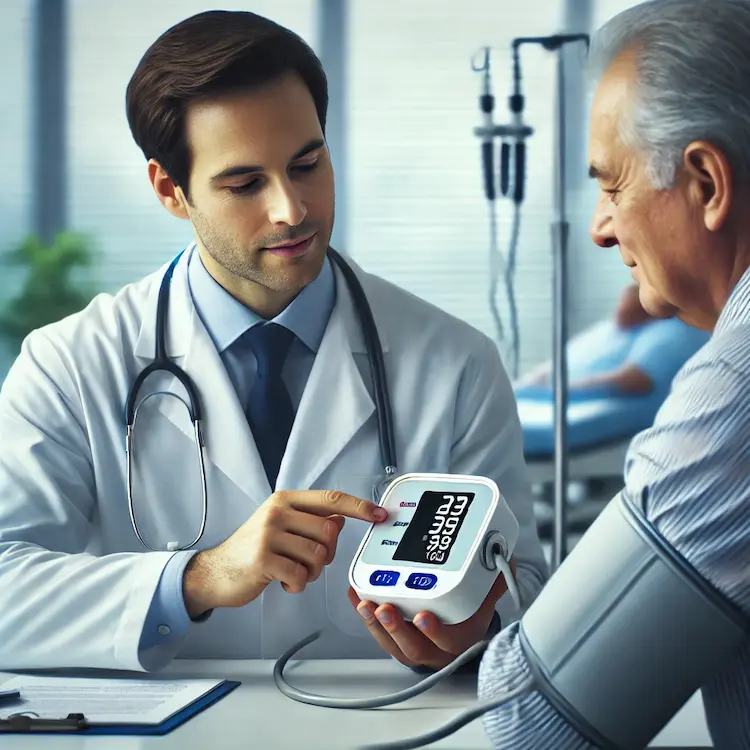Heart disease is one of the leading causes of death globally, and managing it requires constant monitoring and care. One of the vital methods for tracking heart health is Home Blood Pressure Monitoring (HBPM). This method empowers individuals with heart disease to track their blood pressure at home, providing real-time data that can help guide treatment decisions. This article delves into HBPM, its importance for people with heart disease, and how it can be used effectively to improve health outcomes.
Understanding HBPM
What is HBPM?
Home Blood Pressure Monitoring (HBPM) involves using a blood pressure cuff to measure and record blood pressure levels outside of a clinical setting. It allows individuals to check their blood pressure regularly in the comfort of their home, without needing to visit a healthcare provider each time. It’s a convenient, reliable method that helps track fluctuations in blood pressure over time.
Why HBPM is Important for People with Heart Disease
Heart disease often correlates with high blood pressure (hypertension), which can further damage the heart and blood vessels. Regularly monitoring blood pressure can help detect hypertension early, enabling prompt treatment adjustments and reducing the risk of complications such as stroke or heart attack. By managing blood pressure at home, individuals can take control of their health, reduce healthcare costs, and prevent unnecessary hospital visits.
How Does HBPM Work?
HBPM typically requires a blood pressure monitor and a cuff to measure systolic and diastolic blood pressure readings. These devices are often digital, making them easy to use for people of all ages. After the cuff inflates, it measures the pressure of the blood flowing through the arteries, giving a reading in millimeters of mercury (mmHg).
Some advanced models even offer additional features like heart rate monitoring or irregular heartbeat detection, which can be crucial for heart disease patients.

Advantages of HBPM for People with Heart Disease
- Accurate Monitoring: HBPM allows for more consistent monitoring compared to clinical visits, which may only provide a snapshot of a patient’s health. It provides a more comprehensive picture of how blood pressure fluctuates throughout the day, particularly in real-world conditions.
- Convenience and Comfort: Monitoring blood pressure at home eliminates the need for frequent doctor visits, providing more convenience, especially for those with mobility issues or living in rural areas.
- Empowerment and Control: HBPM puts the patient in control of their health, allowing them to make informed decisions about their treatment plans based on real-time data.
- Better Treatment Outcomes: Regularly monitoring blood pressure helps doctors make more informed decisions about medication adjustments. This could lead to more personalized care and better management of heart disease.
Different Tools and Methods for HBPM
Manual vs. Automatic Blood Pressure Monitors
- Manual Monitors: Often require a stethoscope and are typically used by healthcare providers. While more affordable, they require a certain level of skill to operate accurately.
- Automatic Monitors: These are easier to use, with digital screens that display the results instantly. They are ideal for home use and are widely recommended for people with heart disease.
Other Tools for Blood Pressure Monitoring
- Smart Blood Pressure Monitors: These are modern, connected devices that sync with apps on smartphones or other digital devices. This allows users to track their blood pressure readings over time and share data with healthcare providers easily.
- Wearable Blood Pressure Monitors: These innovative devices track blood pressure continuously throughout the day, providing even more detailed data. They are especially useful for patients who experience fluctuations in blood pressure.
Step-by-Step Guide for Using HBPM
- Choose the Right Monitor: Select a device that is validated for accuracy and comfort. Ensure it fits properly, as an ill-fitting cuff can result in inaccurate readings.
- Measure Correctly: Sit in a relaxed position with your arm supported at heart level. Avoid talking or moving during the measurement to ensure accuracy.
- Record Readings: Note the date, time, and the blood pressure reading. Track these measurements over time to spot any patterns.
- Share Data with Your Doctor: Many modern monitors allow you to send readings directly to your healthcare provider. Make sure to consult your doctor about the readings and any necessary adjustments to your treatment plan.
Important Considerations When Using HBPM
- Accuracy of the Device: Not all blood pressure monitors are created equal. Some may be more accurate than others. It’s crucial to invest in a high-quality device that has been validated for accuracy.
- Time of Measurement: Blood pressure varies throughout the day. It’s important to take measurements at the same time each day to compare readings effectively.
- Proper Cuff Size: An incorrect cuff size can lead to inaccurate readings. Ensure that the cuff fits snugly around the upper arm.
Potential Health and Societal Impacts of HBPM
HBPM can play a significant role in improving health outcomes for individuals with heart disease. According to recent studies, patients who use HBPM regularly are more likely to have better-controlled blood pressure, reducing their risk of heart-related complications. Additionally, the ability to monitor blood pressure at home can lead to fewer emergency room visits and hospitalizations, ultimately reducing healthcare costs.

Comparisons with Other Monitoring Methods
HBPM vs. Clinic Measurements
While clinic measurements are performed by healthcare professionals and are often considered the gold standard, they can be affected by “white coat syndrome,” where a patient’s blood pressure rises due to anxiety in a clinical setting. HBPM, on the other hand, provides a more accurate reflection of blood pressure in everyday life.
HBPM vs. 24-Hour Ambulatory Monitoring
24-hour ambulatory monitoring involves wearing a device that takes blood pressure readings throughout the day and night. This method provides continuous monitoring but may be uncomfortable for some patients. HBPM, while less continuous, offers convenience and comfort for regular monitoring without the need to wear a device overnight.
Practical Tips for Successful HBPM
- Stay Consistent: Make blood pressure monitoring a part of your daily routine to gather reliable data.
- Avoid Common Pitfalls: Ensure that you are in a calm environment when measuring your blood pressure. Avoid caffeine, smoking, or exercise before measuring.
- Consult with Your Doctor: Share your data with your healthcare provider regularly. They can help you interpret the results and make necessary adjustments to your treatment.
Conclusion
Home Blood Pressure Monitoring (HBPM) is an invaluable tool for people living with heart disease. By empowering patients to regularly track their blood pressure, HBPM enables better health management, leading to fewer complications and more effective treatments. With a variety of devices available, individuals can choose the best option for their needs and take control of their heart health.

